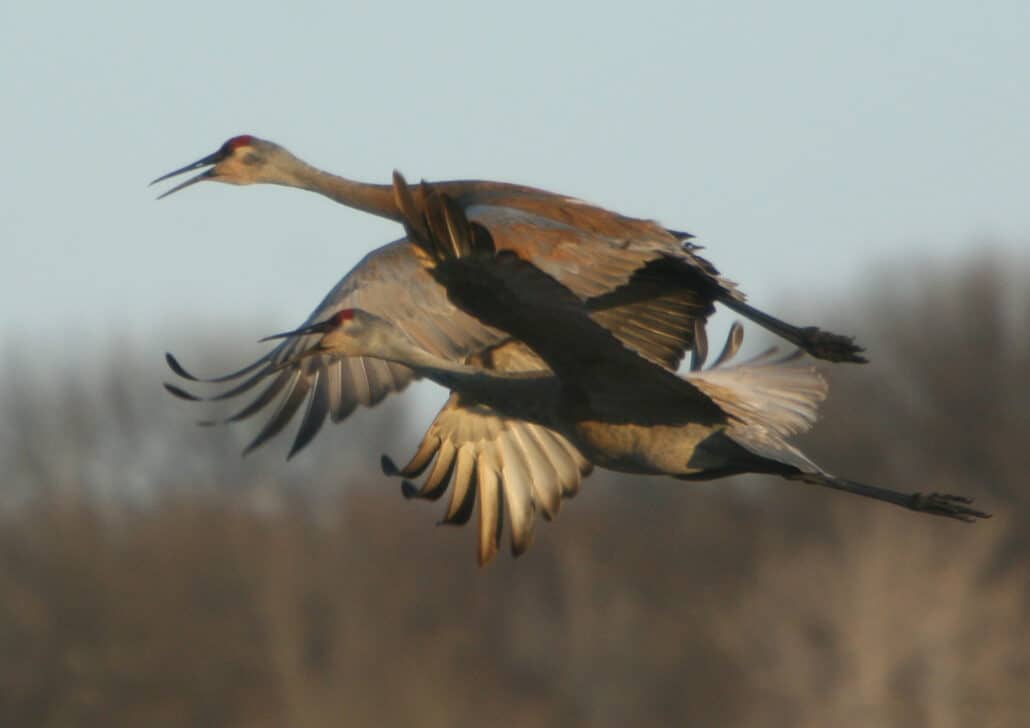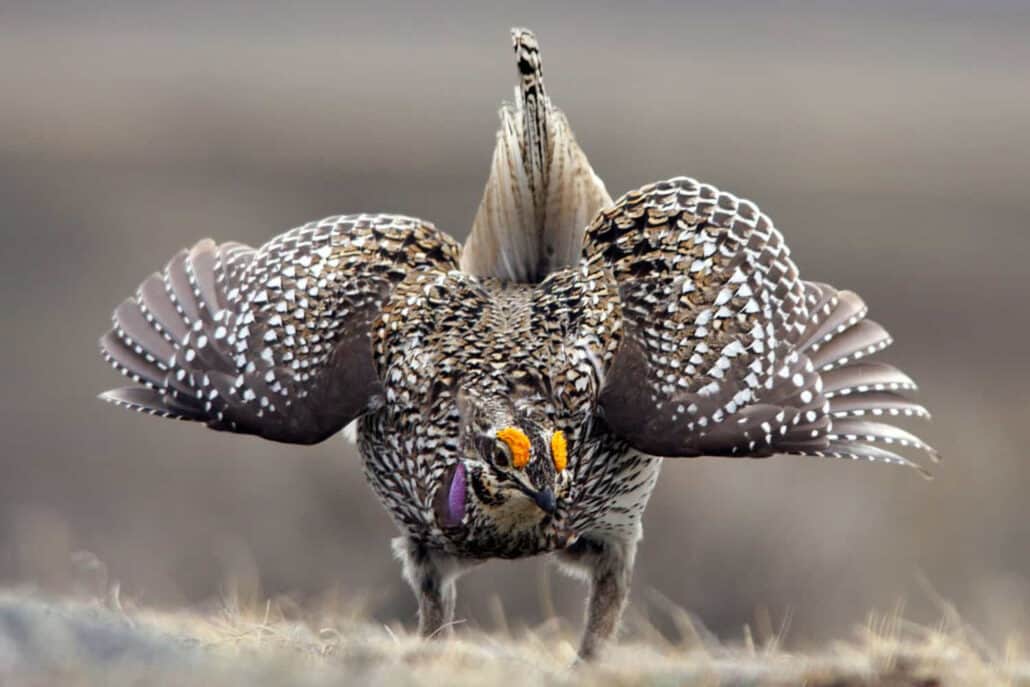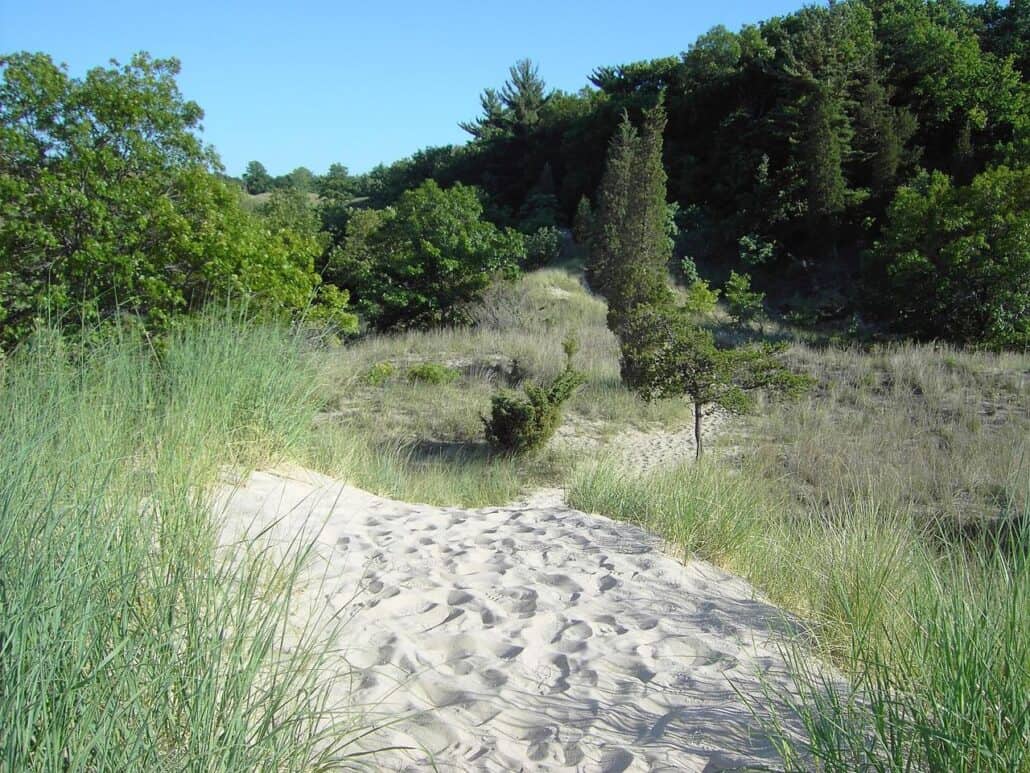The Surprises of Nebraska
We slipped into Omaha behind a late-March snowstorm, drawn by the promise of sandhill cranes. Arriving from Oregon, where the mountains are lofty, the rivers deep and swift, my expectations for the Nebraska countryside were minimal. But Nebraska held surprises.
It didn’t take long, either. Not far from Omaha we crossed the Platte River on I-80, and Eugene Mahoney State Park beckoned. Much lauded for its many activities and family-friendliness, Mahoney is listed in the Top Ten Outings Within a Half Hour of Omaha published by the Nebraska Sierra Club’s Missouri Valley Group.
We first consulted our field guide in the parking lot of the park’s sweeping Peter Kiewit Lodge. “They look like house finches, only prettier,” I said of the blushing birds that twittered from the nearby trees, and grateful that no experienced birders were around to eavesdrop on my amateurish description. Were they purple finches, perhaps? Probably not in here in Nebraska; I think Nebraska house finches are just prettier. Every tree in the lot twinkled as birds flittered around in them.
We headed for the park’s observation tower and its promised panoramic view of the Platte. The 70-foot climb, buffeted by winds, left me gasping with awe and exhaustion as I beheld the Platte River Valley. Broad, steely blue and streaked by sandbars, its namesake meandered from the western horizon toward the unseen Missouri River to the east. This is what we’d come to see. But not exactly, and not here. We had another 150 miles of driving ahead of us before reaching our destination for the day.
A Bird-watching Vacation
A bird-watching vacation in Nebraska had been my partner’s idea. As a fledgling birder, I loved the idea of observing sandhill cranes on their migratory stop along the Platte. I couldn’t imagine, though, how else we would otherwise fill our weeklong vacation. I had spent a lifetime rolling my eyes whenever my mother rhapsodized about the beauty of her native Nebraska. Still, determined to make the most of it, I combed nature books and the Internet for other attractions.
Audubon Nebraska served up two impressive opportunities. The Rowe Sanctuary awaited us near Kearney, our crane-watching base. Before that, another Audubon preserve enticed us into a detour.
Flutelike notes heralded our entry into a place that seemed worlds away from nearby Lincoln. We learned that the invisible chorus was meadowlarks. “They could be eastern or western meadowlarks,” a maintenance man explained, looking up from his chores. “The two species’ territories overlap here.”
Audubon’s Spring Creek Prairie, located three miles south of Denton, preserves Nebraska’s living history in its virgin tallgrass prairie, wetlands, and woodlands. Tallgrass prairie once defined the Great Plains landscape, supporting abundant plant and animal species. It also proved to be bountiful cropland for settlers who migrated westward and turned the plains of history into the “breadbasket of America.” Today, less than 1 percent of the original prairie remains, some of it protected in places like Spring Creek.
Wagon wheel ruts, still visible in the preserve, mark the journey of pioneers on the Oregon Trail, which ended only a few miles from where our Portland home now sits. I was stunned to imagine the hardships of those early travelers’ treks, four to six months on foot covering the miles we’d flown in four to six hours the previous day.
Though it was too early for spring flowers, Spring Creek Prairie revealed sweeping hills in beautifully subtle shades of gold and tan grasses pushing skyward. Gnarly burr oaks and dark green-needled junipers provided contrast. Cloud brushes painted white streaks across a stunning midday sky. Flocks of waterfowl lolled on a marshy farm pond between bursts of unexplained and raucous flight.
The Rowe Sanctuary
Perhaps better known is Audubon’s Lillian Annette Rowe Sanctuary. Arguably “action central” for annual sandhill crane migration, Rowe is a 1,248-acre year-round nature center dedicated to environmental education, stewardship, and preservation of prairie and river habitat. It includes 21?2 miles of the Platte, making it prime real estate for crane viewing. During migration, Rowe offers eager crane watchers opportunities to observe the birds close-up at sunrise and sunset. Rowe also provides refuge to waterfowl, shorebirds, and a variety of mammals, insects, and plants.
As if on cue, cranes fluttered into view as we drove past Grand Island and crossed the Platte again. Two here, five there—the gangly gray birds’ wings fanned the air lazily. Their volume, both in numbers and sound, increased steadily as we approached Kearney. This was what we’d come to experience: the main event.
Because they are notoriously wary of humans, the cranes are most easily viewed from blinds, shelters that conceal the onlookers. We arranged for three guided tours to blinds during our visit. The first was a twilight outing at the Nebraska Nature & Visitor Center near the Wood River interchange on I-80. We arrived early to amble across a pedestrian bridge and along the riverbank before we caravaned with our guide to a blind, just before sundown. The next night we took cover at Rowe Sanctuary, returning again before dawn to watch the birds awaken and take wing in the hazy light of early morning.
At dusk the cranes mesmerized us. Their calls, an odd amalgam of cooing and bugling, echoed along the river. Troops of hang-gliding birds descended, wings outstretched, in slow motion, as their long legs dangled toward touchdown. After jostling, dancing, and calling to one another, they gradually settled down for a night’s rest on the river’s many sandbars.
Even more spectacular was the display at sunrise, when 10,000 birds’ chatter and activity accelerated into frenzied flight. A woman standing next to us burst into tears and began hugging total strangers as squadrons of 10, 20, and 50 flocked directly over our heads in an overwhelming cacophony of bugling and wing flapping.
The cranes weren’t alone on the river that morning. In the silence after their departure, a juvenile bald eagle scavenged the remains of a crane that hadn’t made it to takeoff. A beaver’s morning swim marbled the water’s edge as greater yellowlegs and canvasback ducks foraged.
My Czech ancestors immigrated to Nebraska in the mid-19th century. A developing interest in my family history provided another destination for our Nebraska journey. We had originally planned to head directly from Kearney to find my great-grandparents’ graves in Ainsworth. But only days before our departure from Portland, we received a brochure that offered a “grassland dance” to guests at the Sandhills Motel in Mullen, a tiny town on Highway 2 many miles off our intended route. We were intrigued, though, and amended our itinerary. The detour was worth the extra mileage.
As sandhill cranes leave the Platte for their Canadian breeding grounds, greater prairie-chickens gather on their own mating grounds, called leks. This species is declining as tallgrass habitat shrinks, and many leks are now located on private land not usually accessible to passing tourists. Secretive most of the year, during their spring breeding season, prairie-chickens put on quite a show.
The Sandhills Motel provides guests an opportunity to view greater prairie-chickens on a lek. Again awake before dawn, we drove to a farmer’s field south of Mullen. There, in an old school bus-turned-bird-blind, we spent three chilly hours entranced by male prairie-chickens strutting, jousting, and feather-fluffing before a flock of hens. Formally attired for their grassland dance, the birds’ bright orange neck sacs, stomping footsteps, and eerie oo-loo-roo calls enchanted us.
The prairie-chickens would have been prize enough to reward our change of plans. They turned out to be only a fraction of a veritable nature jackpot. Nebraska’s Sandhills Journey Scenic Byway (state Highway 2) was full of revelations.
“Look! They really are sand.” A rest stop in the Nebraska National Forest afforded me the chance to marvel at the obvious. At my feet lay stark proof of the sandhills’ fragile symbiosis of grass and sand. Like the dunes along any shoreline, this is a shifting landscape—windblown, captivating, and miraculous. I immediately regretted the footprints and tire tracks we left at the roadside.
Western meadowlarks warbled the soundtrack for our passage from the plains to the sandhills. They seemed to be everywhere, on fenceposts and powerlines, dapper in their yellow breast feathers, with distinctive black V markings. They sat so near the road that their songs penetrated our closed car windows.
A hovering white hulk materialized over a powerline farther along the highway. This glimpse of a Krider’s red-tailed hawk was another first. Perhaps the raptor spotted a potential meal among the smaller birds that scattered as it descended.
A Scenic Quest
Natural Nebraska again enthralled us as we headed north on Highway 97. We were searching for a large heron rookery we’d heard about near the Valentine National Wildlife Refuge. Actually, there were two. Virtually alone on the road, we pulled over and set up the spotting scope to spy on the tall birds poised delicately on bare tree limbs. On one marsh we counted 17 nests and 21 great blue herons. At the second, herons and double-crested cormorants shared an arboreal condo with a wetland view.
Eventually we curved east toward Omaha, returning to our original route. The Niobrara River was our welcome companion. This swift waterway, a National Scenic River favored by canoe and tubing enthusiasts, traverses the crossroads of six ecosystems. The Niobrara River Valley is home to bison, prairie dogs, hundreds of bird species, and more than 90 waterfalls.
Another frigid weather front forced us into heavier clothing on the final leg of our trip, pressuring us with predictions of another snowstorm. “How can we fill our time?” suddenly became “Where will we find the time?” as we rushed through Fort Niobrara National Wildlife Refuge and Smith Falls State Park along Highway 12. Despite the pace, we added grasshopper sparrow and horned lark to our growing bird list.
We turned south and savored a short hike in The Nature Conservancy’s Niobrara Valley Preserve, on R.R. 1 between Norden and Johnstown. The preserve highlights and protects a cross-section of the valley’s diverse geology, where sand dunes and tallgrass meet mixed prairie, and conifers give way to deciduous forest.
Then we pressed on in search of Ainsworth and the sprawling old cemetery south of town. Passing between brick pillars that guard the graveyard’s entrance, we located the plot where “Fisher” is etched—block letters on a pebbly granite monument. We had found my ancestors, thanks to local genealogists whose meticulous index is stationed in a hinged wooden box near the entrance.
Jan Nepomuk Fisher and Josephine Berna Fisher, whose families came from Bohemia in the 1850s, built a sod house on the strikingly flat farmland near Ainsworth. My maternal grandmother was born in that soddie, the fifth of 10 children. I recalled the grandma I’d adored—she who charmed me with buttermilk cupcakes, laughter, and attention—whose grave I’d visited a few days earlier in Omaha. Here where her parents were buried, where her own 98-year life had begun, I knelt to touch my roots in the dry, golden grass beside my great-grandfather’s headstone.
Back in Omaha we bundled ourselves for one last, chilly outing and strolled the boardwalk at Fontanelle Forest Nature Center. We reflected on the many pleasant surprises we’d encountered in Nebraska. Beyond the subtle and varied beauty of the land, abundance of bird life, and presence of history that conspired to make this an unforgettable vacation, we also delighted in how inexpensive the trip had been.
Most of the refuges and preserves we visited asked for only donations. Where fees were charged—blind tours for example—the amounts were nominal. Lodging, both in national chains and locally owned establishments, cost at least $20 per night less than we’d have paid for comparable rooms in the Pacific Northwest.
Cloaked in crimson, a northern cardinal chanted birdie, birdie, birdie from a nearby perch. It was a perfect closing theme for our visit to Nebraska. We headed for the airport and boarded our flight home, already listing things to see next time.




